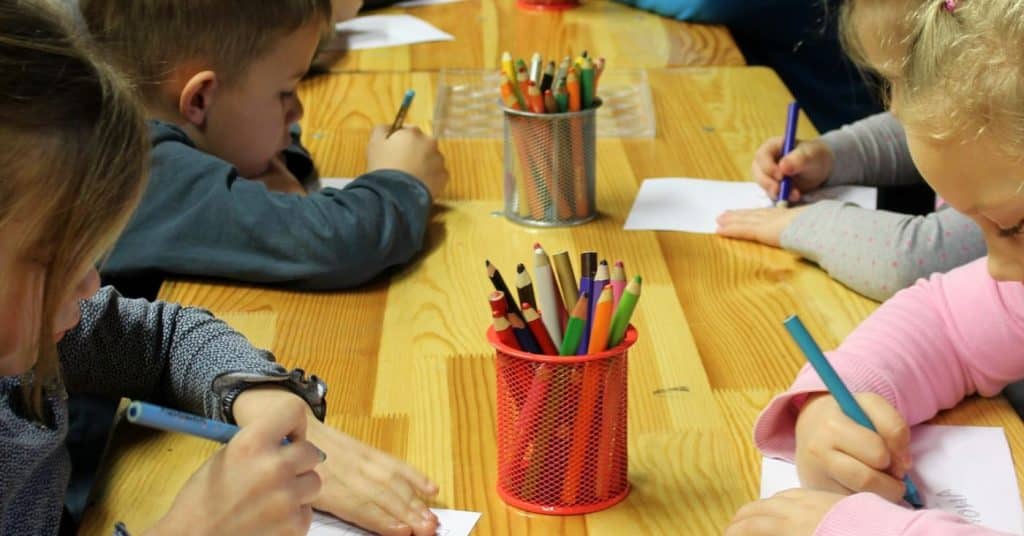Hand, foot, and mouth disease (HFMD) is a common, highly contagious viral illness that predominantly affects children under ten, making childcare settings a potential hotbed for outbreaks. The disease can sweep quickly through households, often leaving adults, including pregnant women, exposed but asymptomatic. (*) (*) (*)
At iKlen, our childcare cleaning service has successfully helped clean and disinfect several childcare centers that faced HFMD outbreaks. Leveraging our expertise, we’ve managed to halt the spread of the virus and restore safe, healthy environments for children and staff alike.
The symptoms of HFMD—blisters in and around the mouth, on hands and feet, accompanied by fever and sore throat—are unmistakable. The virus spreads with alarming ease, through contact with the fluid inside the blisters and fecal matter, making it a challenge to contain, especially among young children.
While there’s no clear evidence of risk to unborn babies, newborns can contract the disease from infected family members, sometimes with severe consequences.
As we delve deeper into this topic, we’ll explore the importance of a clean childcare centre and ways to prevent the spread of HFMD in childcare environments, ensuring the safety and health of our little ones.
Understanding Hand, Foot, and Mouth Disease
This section delves deeper into the disease, explaining its symptoms, clinical features, and transmission methods.
Symptoms and Clinical Features
Hand, Foot, and Mouth Disease (HFMD) primarily afflicts children under ten years of age. However, older children and adults aren’t completely immune. It’s crucial to note that there’s no correlation between this disease and the foot and mouth disease that strikes animals. (*) (*)
When someone contracts HFMD, common signs include fever, sore throat, and fatigue. Blisters are characteristic—these tend to be uncomfortable and appear usually on the mouth, hands, and feet. Please remember, the severity of these symptoms can vary, and some infected children may not exhibit any noticeable signals at all.
Causes and Transmission
The transmission of this highly contagious disease happens through person-to-person contact. An infected individual can pass on the virus present in the secretions from their mouth and respiratory system, often spread by sneezing and coughing. Direct contact with the fluid from blisters also carries the disease. (*)
Additionally, contaminated hands play a crucial role in the spread. Fecal matter of an infected person can contain the virus, which, if not cleaned properly can end up in the mouth of another individual, thus leading to transmission. Objects or surfaces with the virus on them, can serve as additional transmission mediums.
Once exposed to the virus, blisters generally appear between three and five days post-contact. It’s important to note that the virus can remain in feces for several weeks. This prolonged viability of the virus reiterates the importance of good hygiene and sanitation practices at home, schools, and notably childcare centers to minimize further spread of HFMD. (*)
The complexities of understanding and managing HFMD are indeed quite daunting. However, with meticulous knowledge, proper precautions, and adherence to advised guidelines, we believe it is possible to navigate through.
Impact on Childcare Environments
As HFMD is highly contagious, childcare environments can easily foster its transmission. This section explores the specific risks in these settings and offers useful strategies for managing outbreaks effectively.
Risk Factors in Childcare Settings
In childcare settings, certain factors amp up the risk of HFMD transmission. Regular close contact among children and shared usage of facilities, toys, and other items can contribute to the rapid spread of the infection.
For example, the virus is often unknowingly passed on to a playmate, from the hands of an infected child who fails to thoroughly wash their hands after visiting the restroom. HFMD can also spread quickly via spit-covered toys, shared meals, or even through the air when an infected child coughs or sneezes.
Managing Outbreaks in Childcare Facilities
Dealing with HFMD outbreaks in childcare facilities requires a well-planned strategy. High on the list of priorities is hygiene. (*)
Regular and thorough handwashing by kids and staff can dramatically reduce the disease’s spread. Disinfecting shared toys and frequently touched surfaces also helps keep the virus at bay.
When cases crop up, isolating the affected children from their peers can prevent further transmission. Communication is also key; promptly notifying parents of an outbreak offers them a chance to take steps to protect their child and to monitor for symptoms in their kid.
By putting such measures into practice, childcare facilities take crucial strides in maintaining a healthier, safer environment for our little ones.
Best Practices for Prevention
Preventing Hand, Foot, and Mouth Disease (HFMD) in childcare environments requires specific strategies geared towards ensuring high standards of hygiene and effective communication.
Hygiene and Disinfection Protocols
Promote regular handwashing. This act, as simple as it sounds, plays an integral part in preventing the spread of HFMD. Encourage children to wash their hands (especially after using the restroom and before mealtimes). Children aren’t the only ones who need to keep their hands clean. Teachers, caregivers, and parents also need to practice this habit. (*)
Next, keep that childcare environment shining. Regular and thorough cleaning of shared toys, utensils, and other objects can be a game-changer. Contaminated surfaces are a common transmission point for the HFMD virus. Make sure to take this seriously, giving all items a thorough clean and disinfection frequently.
You can learn more about childcare cleaning policies and procedures on our blog for more details.
Education and Communication Strategies
Education is instrumental in preventing HFMD spread. Equip staff members with knowledge about the disease, its symptoms, and the necessary preventive measures. Cultivate a team that’s alert and ready to act at the first sign of illness.
Open communication lines with parents and guardians. They need to know about HFMD as much as the staff does. Regular updates, guidelines, and reassurances sent their way can greatly alleviate worries and lead to swift action if their child becomes unwell.
In this journey, we’re all in it together. The more we understand about HFMD, and the more effectively we communicate, the better we can prevent its spread, keeping our children healthy and safe.
Diagnosis and Treatment
Understanding the specifics of Hand, Foot, and Mouth Disease (HFMD) can aid in its prompt identification and effective management.
When to Seek Medical Attention
It’s important to note that HFMD exhibits clear symptoms three to seven days post initial contact with the virus. Symptoms such as fever, small blisters appearing on hands and feet, inside the mouth, and occasionally around the genitals, irritability, joint pain, and signs of tiredness should warrant medical attention.
When these signs are noted in children, especially amidst a disease outbreak in childcare settings, consult a healthcare professional promptly. Parents and teachers need to be on the lookout for these symptoms, taking necessary action quickly. Additionally, good hygiene practices play an essential role in preventing further disease spread.
Available Treatment Options
No specific treatment exists for the virus causing HFMD. However, the symptoms can be managed effectively. After the diagnosis by a general practitioner (GP), the principal options include plenty of rest for the affected child, giving them pain relief with paracetamol and, for older children with a sore throat, lozenges can be beneficial.
Since swallowing could be painful due to the sore throat, keeping children hydrated is necessary. In rare cases, HFMD may cause serious illnesses that affect the heart, brain, lungs, or eyes. If these complications arise or if symptoms don’t improve after a few days, see a healthcare professional immediately.
Policies for Illnesses in Childcare
Childcare facilities serve as critical environments in which children develop social skills, engage in learning, and often encounter communicable diseases, including Hand, Foot, and Mouth Disease (HFMD). Tailoring effective policies for managing illnesses is mandatory to curb the spread of infections and maintain a healthy environment.
Exclusion and Return to Care Guidelines
The initial step involves recognizing the illness in affected children. On noticing symptoms of HFMD such as fever, sore throat, tiredness, or blisters, it’s essential to inform the child’s parents and request their prompt response. As HFMD is contagious, it’s recommended to exclude the unwell child from the facility until they’re free of symptoms. (*)
We adopt the principle of “better safe than sorry”, choosing exclusion over risking the wellbeing of other children. The exclusion period depends on the severity of the illness and individual recovery rates. It’s important to understand that this approach is not penalizing, it’s a preventive measure taken for the collective good that also respects the affected child’s need to recover fully before resuming their usual routine.
How long should children stay away from childcare and school?
The duration for which children should abstain from childcare and school differs based on individual cases. Generally, children exhibiting symptoms of HFMD should remain at home until all blisters have dried—this duration typically ranges between 7-10 days. However, this duration may vary depending on the severity and frequency of symptoms.
Public Health Guidelines and Reporting
Keeping a structured system for reporting cases of illness is pivotal. Childcare centers ought to notify local public health authorities about any HFMD cases. Sharing the correct information about the number of affected children and staff can aid public health officials in tracking the outbreak, determining its magnitude, and issuing necessary health advisories.
Regularly monitoring public health guidelines and updating management policies in accordance with them ensures we are proactive in handling disease outbreaks. It’s a cycle of perpetual learning with the goal always being to safeguard the health of the children in our care.

